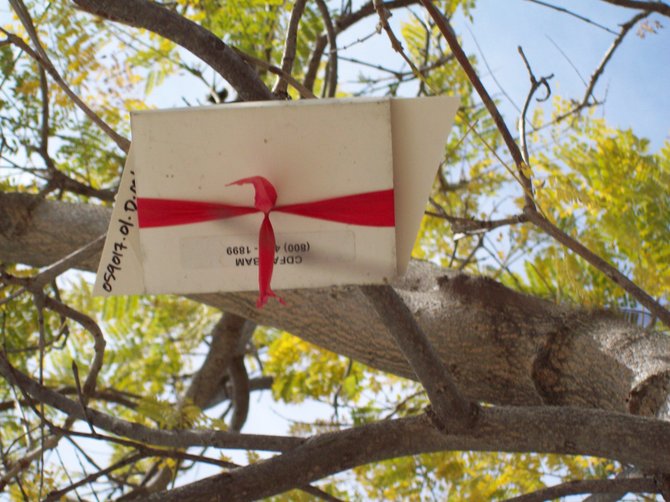 Facebook
Facebook
 X
X
 Instagram
Instagram
 TikTok
TikTok
 Youtube
Youtube

In September 2010, the California Department of Food and Agriculture quarantined a portion of San Diego County when the light brown apple moth was found one mile east of Balboa Park.
The pest, native to Australia and found in New Zealand and Hawaii, has no natural predators and feeds on the leaves, buds, and shoots of vegetables, fruit trees, ornamentals, and other trees. The moth is invasive and known to feast on at least 2000 plants and 250 crops, but "Their greatest damage comes from larvae feeding on the fruit, causing brown areas on the fruit's surface," according to San Diego County's Department of Agriculture, Weights and Measures, website.
The quarantine covers an area of ten square miles, bounded by El Cajon Boulevard on the north, Chollas Parkway on the east, Market Street on the south, and Park Boulevard on the west.
Last month, one moth was found just east of the Sweetwater Reservoir, and traps were hung in trees to capture the insect. It appears, however, that the quarantine area has been expanded: the trap in this picture is in Normal Heights, nine blocks north of El Cajon Boulevard.


In September 2010, the California Department of Food and Agriculture quarantined a portion of San Diego County when the light brown apple moth was found one mile east of Balboa Park.
The pest, native to Australia and found in New Zealand and Hawaii, has no natural predators and feeds on the leaves, buds, and shoots of vegetables, fruit trees, ornamentals, and other trees. The moth is invasive and known to feast on at least 2000 plants and 250 crops, but "Their greatest damage comes from larvae feeding on the fruit, causing brown areas on the fruit's surface," according to San Diego County's Department of Agriculture, Weights and Measures, website.
The quarantine covers an area of ten square miles, bounded by El Cajon Boulevard on the north, Chollas Parkway on the east, Market Street on the south, and Park Boulevard on the west.
Last month, one moth was found just east of the Sweetwater Reservoir, and traps were hung in trees to capture the insect. It appears, however, that the quarantine area has been expanded: the trap in this picture is in Normal Heights, nine blocks north of El Cajon Boulevard.
Comments